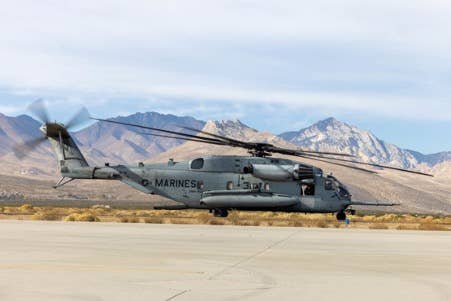All Five Aboard USMC Helicopter Confirmed Dead
All five U.S. Marines onboard a crashed CH-53E Super Stallion helicopter are confirmed dead, according to a USMC news release today (Feb. 8). The helicopter departed on what is described…

U.S. Marine Corps CH-53E Super Stallion.
Photo: Lance Cpl. Jennifer Sanchez/U.S. Marine Corps
All five U.S. Marines onboard a crashed CH-53E Super Stallion helicopter are confirmed dead, according to a USMC news release today (Feb. 8). The helicopter departed on what is described as part of a training mission from Creech Air Force Base near Las Vegas, Nevada, Tuesday, but was reported overdue late that night at its home base, Marine Corps Air Station Miramar in San Diego.
The wreckage was sighted Wednesday morning in mountainous terrain 30 miles east of its destination. Efforts by multiple government agencies to recover the remains of the victims, members of the 3rd Marine Aircraft Wing, Heavy Helicopter Squadron 351, have been hampered by heavy snow in the Pine Valley area where the crash occurred. Their identities will not be released until 24 hours after their families have been notified, per Marine Corps policy.
As part of today’s statement, Maj. Gen. Michael Borgschulte, Commanding General of the 3rd Marine Aircraft Wing, said, “These pilots and crewmembers were serving a calling greater than self and were proud to do so. We will forever be grateful for their call to duty and selfless service.”






